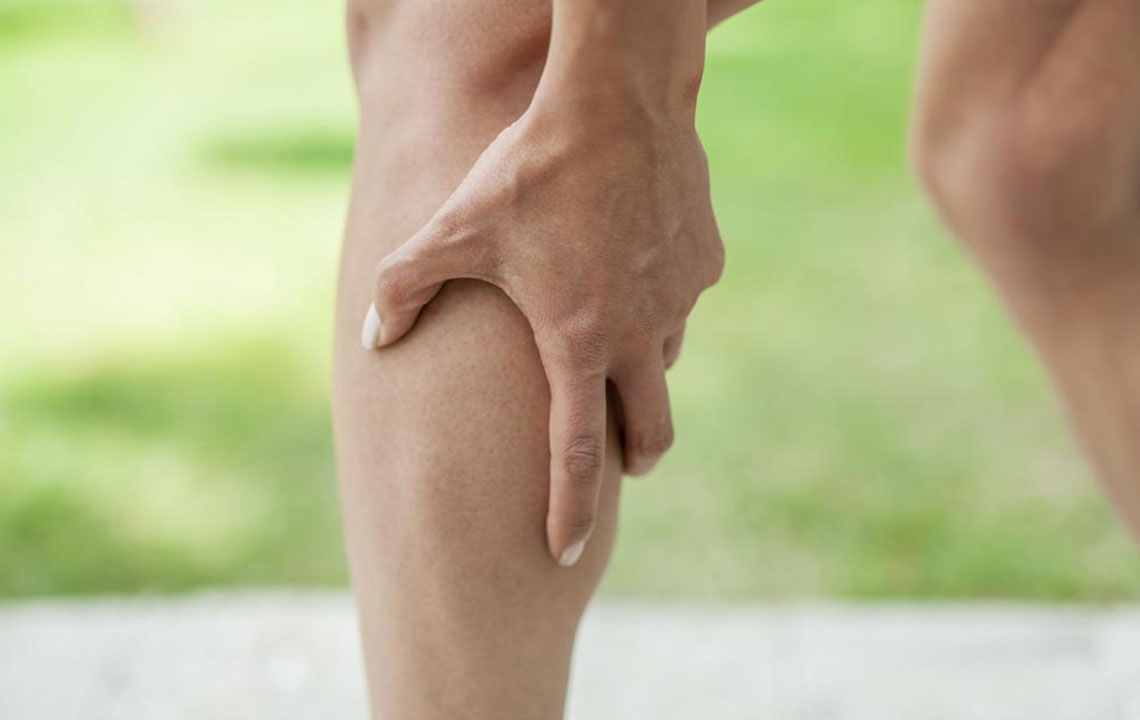Everything You Needed to Know about Leg Cramps

Leg cramps happen when the muscles in the leg contract, which causes pain. This involuntary contracting of leg muscles causes leg cramps. Leg cramps mainly affect muscles in the thigh or the foot. It mostly occurs when you are asleep or just after you wake up.
Reasons For Leg Cramps
The sudden pain in the muscle can be due to different reasons:
- Inadequate supply of blood
There are times when you exercise too much or have been sitting in same posture for hours. This prevents adequate supply of blood to your legs, causing contraction of muscles. - Compression of nerves
The spinal cord nerve directly connects to your leg muscles. Pain in the spinal cord or compression of spinal cord nerve can also cause pain in your legs. Walking with a good posture can help prevent compression of the spinal nerve. - Mineral depression
There are certain minerals needed for efficient working of leg muscles. Deficiency of minerals such as magnesium or calcium can cause leg cramps. There are certain medications that deplete the content of these minerals in your body.
To add to the causes, there are factors that increase the risk of leg cramps:
- Age
As you age, you lose strength and the muscles grow weak, leading to loss of muscle mass. Therefore, when muscles are overstressed, it leads to leg cramps. - Dehydration
Most of the time, you are always doing an activity that requires leg strength. Lack of water intake leads to inadequate fluids in the body that result in contraction or tightening of your leg muscles. This generally happens to athletes; they feel sudden pain while training on a hot sunny day, due to loss of more fluids than usual, from the body. - Pregnancy
Pregnancy is one major factor of leg cramps. This is because, during pregnancy, the body requires more minerals such as potassium and calcium for adequate functioning of leg muscles. The deficiency of these minerals results in leg cramps. - Medical conditions
There are certain medications, for example, in case of blood pressure, that reduce the content of certain minerals in the body, which causes leg cramps. Also, diseases such as diabetes, and liver and thyroid disorders increase the risk of leg cramps.
There are certain easy and quick natural treatments and supplements for leg cramps. Stretching and massaging the muscles can be helpful to reduce the effect of cramps. Slowly massaging the affected area will loosen the tightened muscle and slowly reduce the pain. If unbearable, applying a hot bag or cold pack of ice on the affected area will also work depending on your body condition. However, drinking plenty of water will prevent the leg cramps in the first place. Also, try and maintain a correct posture while sleeping. Change your posture after every few minutes if you are sitting or standing for a long time.
These are the quick remedies to treat leg cramps and work well on mild pain. However, you can take supplements to prevent contraction or tightening of muscles which leads to leg cramps.
Supplements for Leg Cramps:
There are various ways that work as supplements for leg cramps. You can also consume supplements to prevent contraction or tightening of muscle:
- Calcium
Calcium is responsible for bone strength, and its deficiency can lead to brittle, weak bones. Calcium prevents high lead levels in the body and is used as an antacid in case of heartburn. Dairy foods and vegetables rich in calcium such as milk and broccoli can also be consumed in such cases. The right amount of calcium is vital for the leg muscles. - Magnesium
Another important supplement is magnesium. Magnesium is important for the body’s bone structural development. Usually, women suffer from magnesium deficiency. Foods that are rich in fiber contain the high level of magnesium. These include vegetables, fruits, and chocolates. Lack of magnesium can also lead to heart diseases. - Potassium
Potassium is helpful in proper blood circulation in the body. One of the causes of leg cramps is the potassium deficiency. It causes insufficient circulation of blood to the leg muscles. This deficiency increases with increase in age. There are many potassium-rich products, especially dairy products, that you can consume to prevent leg cramps.
The above supplements to prevent leg cramps should be taken in recommended quantities as they may have mild side effects. For example, too much calcium will tighten your leg muscles, which may lead to series of bone-related problems. However, these supplements are best known to prevent leg cramps.
There is an ongoing debate on which supplement is best suited to prevent leg cramps, but the research is never-ending. You must know what best suits your body and then work on the treatments accordingly. Leg cramps are not a serious health issue but it’s always better to prevent it. Exercise regularly to prevent leg cramps and keep your muscles healthy.


